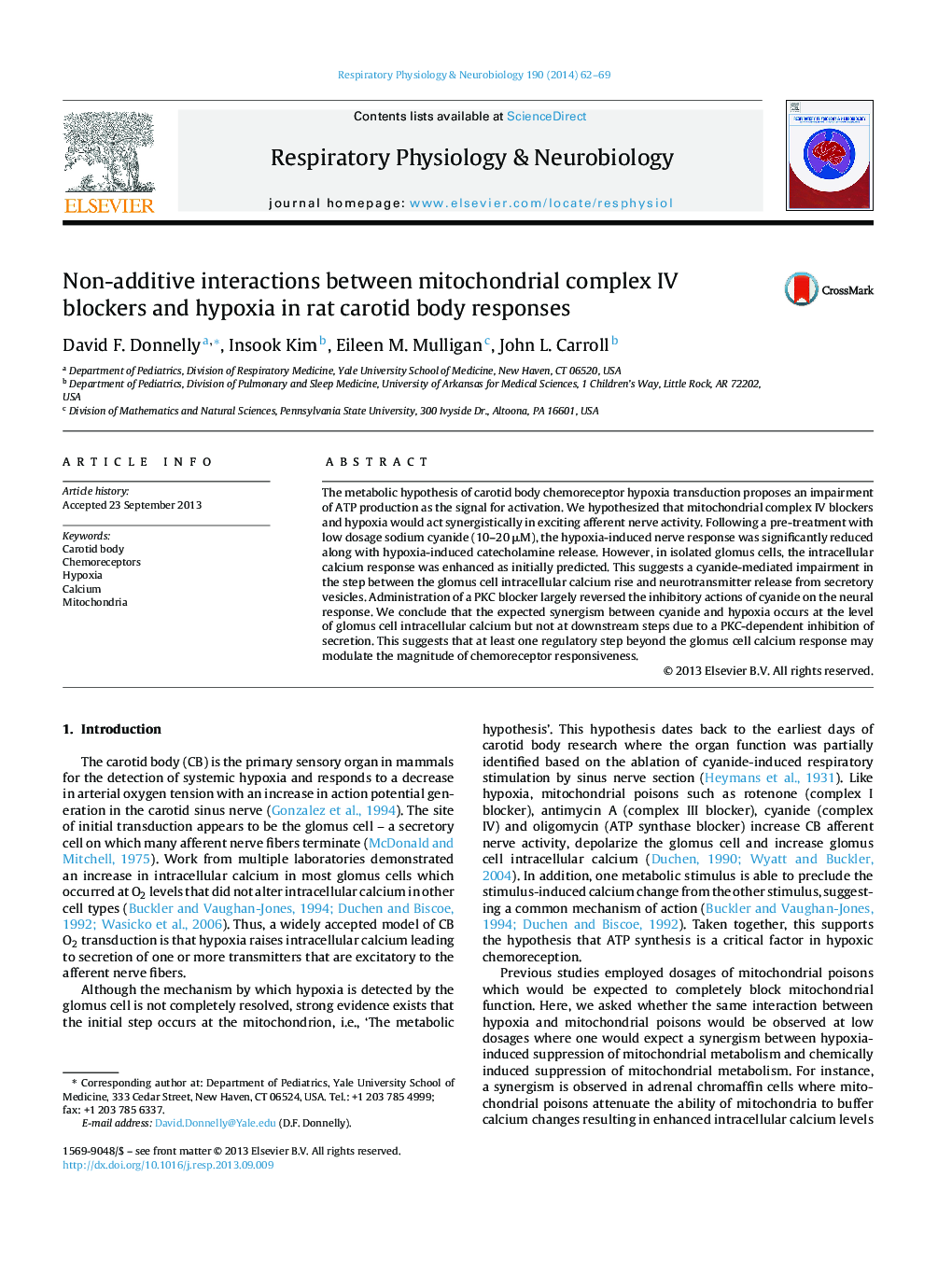| Article ID | Journal | Published Year | Pages | File Type |
|---|---|---|---|---|
| 2847116 | Respiratory Physiology & Neurobiology | 2014 | 8 Pages |
•Impaired mitochondrial metabolism is the likely sensor for detecting hypoxia by the carotid body.•If so, then mitochondrial poisons should synergistically enhance the sensitivity to hypoxia.•As predicted, hypoxia and cyanide synergistically enhanced the rise in glomus cell calcium caused by either agent.•Unlike the calcium response, cyanide reduced the nerve response to hypoxia, an effect reduced by a PKC blocker.•This suggests the presence of a modulatory step between glomus cell intracellular calcium and afferent nerve activity.
The metabolic hypothesis of carotid body chemoreceptor hypoxia transduction proposes an impairment of ATP production as the signal for activation. We hypothesized that mitochondrial complex IV blockers and hypoxia would act synergistically in exciting afferent nerve activity. Following a pre-treatment with low dosage sodium cyanide (10–20 μM), the hypoxia-induced nerve response was significantly reduced along with hypoxia-induced catecholamine release. However, in isolated glomus cells, the intracellular calcium response was enhanced as initially predicted. This suggests a cyanide-mediated impairment in the step between the glomus cell intracellular calcium rise and neurotransmitter release from secretory vesicles. Administration of a PKC blocker largely reversed the inhibitory actions of cyanide on the neural response. We conclude that the expected synergism between cyanide and hypoxia occurs at the level of glomus cell intracellular calcium but not at downstream steps due to a PKC-dependent inhibition of secretion. This suggests that at least one regulatory step beyond the glomus cell calcium response may modulate the magnitude of chemoreceptor responsiveness.
